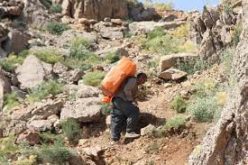RFL/RE – Iran’s top security body has said the cause of an incident at one of the country’s nuclear facilities has been determined, but it declined to release details, citing security reasons.
A building at the Natanz uranium-enrichment plant was damaged in what appeared to be an explosion or fire in the early hours of July 2, fueling speculation of a possible act of sabotage as Iranian officials struggled to explain what happened.
A spokesperson from Iran’s Supreme National Security Council said on July 3 that investigators determined the cause of the incident after examining “different hypotheses.”
“Due to some security considerations, the cause and manner of this incident will be announced at a proper time,” Keyvan Khosravi said, according to state-run Press TV.
Iran’s Atomic Energy Organization on July 2 described the damaged building as an “industrial shed” under construction above ground at Natanz.
The affected building was not part of the underground enrichment facility itself, which is protected against air strikes by 7.6 meters of concrete.
U.S. experts at the James Martin Center for Nonproliferation Studies at Middlebury Institute of International Studies used satellite footage to determine the damaged building was a new centrifuge assembly workshop.
Centrifuges are used to produce enriched uranium, which can be used for nuclear fuel at lower levels but also to produce nuclear weapons-grade uranium.
Inspectors from the International Atomic Energy Agency (IAEA) have been visiting Natanz to monitor uranium-enrichment activities since Tehran and world powers signed a nuclear agreement in 2015.
The UN nuclear watchdog said it has been informed about a fire at Natanz and that there was no nuclear or radioactive material in the damaged building. It said Natanz is under IAEA safeguards, including verification and monitoring.
U.S. Sanctions
The United States withdrew from the nuclear deal in May 2018, prompting Tehran to progressively break restrictions laid down in the accord.
Under the deal, Iran is allowed to have just over 5,000 of the oldest and least efficient centrifuges at Natanz.
But in response to U.S. sanctions, Iran in November 2019 said it had installed new cascades of advanced centrifuges at Natanz and restarted injecting gas into centrifuges at the underground Fordo facility in violation of the nuclear deal.
The IAEA says Iran enriches uranium to about 4.5 percent purity — above the 3.67 percent allowed under the terms of the nuclear deal but far below weapons-grade levels of 90 percent.
Mystery surrounding the incident has been heightened by an online video claiming responsibility for the damage to the building at Natanz from a previously unknown group calling itself Cheetahs of the Homeland.
Hours before the attack, the group sent a video to BBC Persian journalists which said they were a group of “soldiers from the heart of the regime’s security organizations” who want to stop Iran from acquiring nuclear weapons.
While Iranian officials have sought to downplay the fire, they also appear to be open to the possibility of sabotage backed by foreign powers.
Reuters cited three unidentified Iranian officials as saying they believed the fire was the result of a cyberattack, without citing any evidence.
State news agency IRNA published an editorial on July 2 addressing what it called the possibility of sabotage by “hostile countries,” especially Israel and the United States.
Natanz was the target of the Stuxnet computer virus in 2010 that is widely believed to have been engineered by the U.S. and Israel to sabotage Iran’s nuclear program.
The incident at Natanz comes a week after the Iranian Defense Ministry said there was an explosion at a gas-storage facility near the Parchin military base east of Tehran.
Parchin is suspected of having hosted conventional explosion tests with nuclear applications more than a decade ago, which the Islamic republic denies.
Iranian lawmaker Yaghoub Rezazadeh said on July 4 that Foreign Minister Mohammad Javad Zarif and the head of Iran’s Atomic Energy Agency Ali Akbar Salehi have been summoned to the parliament’s National Security and Foreign Policy Commission on July 5 to brief members on recent “incidents” at Natanz and Parchin.
He said if intelligence services establish that “sabotage” caused the incidents, then “necessary decisions will be made.”
The U.S.-based private intelligence firm Stratfor said either incident could “have been the result of a domestic group acting with or without foreign support, or the result of a U.S. or Israeli cyberattack.”
“If there is a campaign by the United States, Israel and/or local groups in Iran under way, then Iran is likely to eventually respond in kind, potentially against Western targets in the Persian Gulf,” Stratfor warned.
 Shabtabnews In this dark night, I have lost my way – Arise from a corner, oh you the star of guidance.
Shabtabnews In this dark night, I have lost my way – Arise from a corner, oh you the star of guidance.


